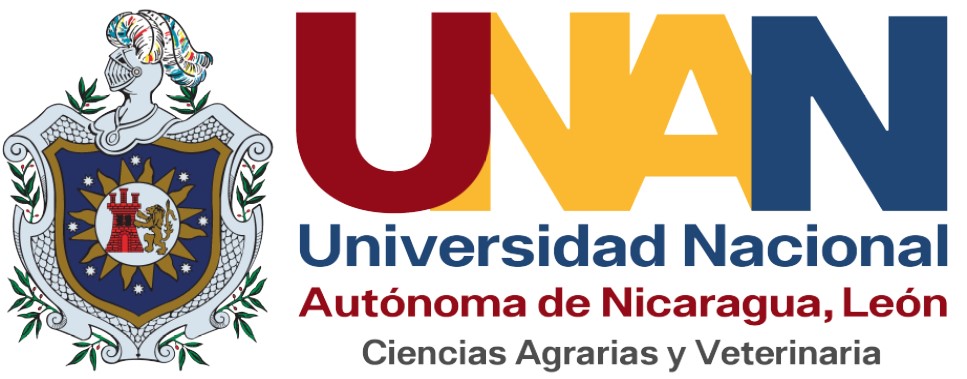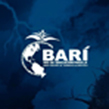
Instrucciones a los autores
Instructivo para autores
Antes de la presentación de un manuscrito a la Revista Iberoamericana de Bioeconomía y Cambio Climático (REV. IBEROAM. BIOECON. CAMBIO CLIM.) es muy recomendable que lea acerca de nuestro alcance y compruebe políticas de sección y áreas temáticas o archivos retrospectivos al igual que todos los formatos y estilo de los detalles de su documento están de acuerdo con los requerimientos de la revista. Esto evitará demoras innecesarias causadas por el formato y el estilo de correcciones solicitadas por la revista al comienzo del proceso de evaluación. Nuestra revista publica en español y en inglés. La revista utiliza la Norma Internacional de APA 7 Edición para las referencias bibliográficas, por tanto, los manuscritos en su redacción se apegan a estas normas. Todos los autores al enviar su documento deben asegurar incluir en los Metadatos el número ORCID y afiliación a la que pertenece (Completa, sin abreviatura y después de una coma agregar el país al que pertenece).
Todos los artículos que sean enviados para su publicación en REV. IBEROAM. BIOECON. CAMBIO CLIMA. deben cumplir los siguientes estándares:
- Originalidad, el aporte ha de ser totalmente inédito, no publicado todo o en parte en publicación alguna, excepto casos muy justificados. Llenar formato de originalidad (buscarlo al final de las instrucciones).
- Consistencia metodológica, dada por el uso de métodos y técnicas de investigación válidas.
- Significación del asunto tal que informe o ilumine cuestiones relevantes del campo de las ciencias agrarias, económicas y educativas.
- Impacto previsible para una amplia audiencia tanto de prácticos como de académicos.
- Estilo de redacción claro, conciso y ordenado; se evitarán jergas personales y expresiones locales.
- Las ecuaciones deben ser escritas con editor de ecuaciones, centradas y numeradas consecutivamente entre paréntesis. Los símbolos de las constantes, variables y funciones, así como las letras latinas o griegas que están incluidas en las ecuaciones, deben ir en cursiva.
- Todas las Figuras y Tablas se deben referenciar en el texto. El título, la numeración de las Figuras y su descripción así como la fuente (si no es propia) se deben colocar en la parte de debajo de la Figura, en letra arial de 10 puntos. La numeración y descripción de las tablas se debe colocar en la parte de arriba, mientras que la fuente se coloca debajo de la tabla en el margen izquierdo, letra arial tamaño de 10 puntos.
- Se deben utilizar las unidades, dimensiones y símbolos del Sistema Internacional de unidades, SI.
Tiempos de procesamiento del manuscrito
Una vez que envíe su manuscrito tenga en cuenta los siguientes plazos para cada etapa del proceso:
a) Espere cinco días para recibir un correo electrónico confirmando que su manuscrito ha sido recibido. Si usted no recibe noticias de nosotros dentro de cinco días, debe ponerse en contacto con nosotros inmediatamente. En el mismo se le indicara si cumple con los metadatos, todos los autores deben registrarse en la revista con sus respectivos ORCID, y entender que se filtrara su manuscrito por un software para detectar plagio.
b) Permita 15 días para recibir nuestro mensaje explicando si nuestro Comité Editorial decidió asignar un editor académico especializado y revisores.
d) Deje 25 días para recibir comentarios del revisor.
e) Se le permitirá de 10 a 15 días (días 35) para procesar los comentarios de los revisores y editor academico a su manuscritos e igual redactar la carta de refutación donde indicara las mejoras realizadas linea por linea.
f) Deje 10 días (días 40) para recibir indicaciones sobre el segunda ronda o la finalización de la primera.
g) Deje 40 días para recibir su aceptación o rechazo.
Finalmente, entre 10 y 15 se publica. El proceso dura entre 45 a 55 dias.
Cualquier pregunta relacionada con un manuscrito deben ser enviadas a Conrado Ronaldo Quiroz Medina conrado.quiroz@ev.unanleon.edu.ni
Nuestra revista inicia con la política por Cargo por procesamiento de artículo (APC) para publicar valioso documento sin costo alguno para los autores.
TIPOS DE MANUSCRITOS Y AREAS TEMATICA (POLITICAS DE SECCION)
Las contribuciones a publicarse en la REV. IBEROAM. BIOECON. CAMBIO CLIM. deberán estar escritas a 1.5 espacio (no incluidos Tablas y Figuras) en letra Times new román tamaño 11 en todo el documento, con márgenes de 2.54 en el margen superior, 2.54 en el margen inferior, 2.54 en el margen izquierdo y 2.54 en el margen derecho.
Cada cuartilla estará numerada en la esquina inferior derecha y numerar los renglones iniciando con 1 en cada página. Los apartados: resumen, introducción, materiales y métodos o metodología, resultados, discusión, conclusiones, agradecimientos y literatura citada, deberán escribirse en minuscula con letra inicial mayuscula y negritas alineadas a la izquierda (Time new roman, tamaño 11)
Artículo de investigacion. Escrito original e inédito que se fundamenta en resultados de investigaciones. Los artículos deberán tener una extensión máxima de 20 a 25 cuartillas (incluidos Tabla y Figuras) y contener los siguientes apartados: 1) título; 2) autores(as); 3) institución de trabajo de autores(as); 4) dirección de los autor (a) para correspondencia y correo electrónico; 5) resumen; 6) palabras clave; 7) introducción; 8) materiales y métodos; 9) resultados y discusión; 10) conclusiones y 11) literatura citada o refrencia bibliográfica.
Nota de investigación. Escrito que contiene resultados preliminares y transcendentes que el autor(a) desea publicar antes de concluir su investigación; su extensión es de ocho cuartillas (incluidos Tablas y Figuras); contiene los mismos apartados que un artículo científico, pero los incisos 7 al 10 se escribe en texto consecutivo; es decir, sin el título del apartado.
Articulos de revision. Escrito recapitulativo generado del análisis de temas importantes y de actualidad para la comunidad científica, en donde el autor(a) expresa su opinión y establece sus conclusiones sobre el tema tratado; deberá tener una extensión máxima de 20 cuartillas (incluidos Tablas y Figuras). Contiene los apartados 1 al 6 y 11 del artículo de investigacion. El desarrollo del contenido del ensayo o articuclo de revision se trata en apartados de acuerdo al tema, de cuya discusión se generan conclusiones. Es importante considerar una metodología de revisión al corde del tema investigado.
Formato del escrito
Título. Debe aportar una idea clara y precisa del escrito en ingles y español, utilizando 25 palabras como máximo; en mayúsculas la primera letra y negritas, y centrado hacia la izquierda; sin subtítulo y sin abreviaturas; si incluyen nombres científicos, deben seguir la norma de la nomenclatura taxonomica, para estos y no utilice mayúsculas sostenidas.
Autores(as). Se entregara en un documento independiente que se denominara Portada. Los nombres sin grados académicos y sin cargos laborales; al final de cada nombre se colocará índices numéricos y se hará referencia a estos, inmediatamente debajo de los autores(as); en donde, llevará el nombre de la institución al que pertenece y domicilio institucional de cada autor(a); incluyendo código postal y correos electrónicos; e indicar el autor(a) para correspondencia entre paréntesis y señalado en negrilla, el numero ORCID (obligatorio). No se aceptan artículos cuyo autor principal no tenga una afiliación institucional de una entidad que desarrolle actividades de investigación. Es obligatorio que todos los autores y sus respectivas afiliaciones institucionales queden registrados tanto en la hoja de portada que se anexa al artículo como en los metadatos del OJS. Los autores que no se registren en los metadatos no quedarán relacionados en el artículo y debe ser en el orden que indica el manuscrito.
Resumen. Presentar una síntesis de 250 palabras como máximo, que contenga lo siguiente: justificación, objetivos, breve descripción de los materiales y métodos o metodología utilizados, resultados, y conclusiones; el texto se escribe en forma consecutiva, sin citar autores. No incluir citas. Los subtitulos Antecedentes, Metodología, Resultados y Conclusión deben ir en negrillas.
Palabras clave y keywords. Se escriben después del resumen y sirven para incluir al artículo científico en índices y sistemas de información. Seleccionar cinco palabras claves evitando las palabras utilizadas en el título. Los nombres científicos de las especies mencionadas en el resumen, No deberán colocarse como palabras clave y/o keywords. Tesauro de la UNESCO
Introducción. Su contenido debe estar relacionado con el tema específico y el propósito de la investigación; señala el problema e importancia de la investigación, los antecedentes bibliográficos que fundamenten los objetivos y las hipótesis. Ademas se debe dejar claro la importancia, contribución y las implicancias de la investigación.
Revisión de literatura. En el caso de estudios que requiera la revisión de teorias o modelos que requieran una consideracion en la metodologia y herramientas a utilizar en el estudio. En el caso de ensayos, revisión o notas de investigación es muy riguroso que este acapite se agregue.
Materiales y métodos. Incluye la descripción del sitio experimental, materiales, equipos, métodos, técnicas y diseños experimentales utilizados en la investigación. Metodología que se cite debe describirse.
Resultados y discusión. Presentar los resultados obtenidos en la investigación y señalar similitudes o divergencias con aquellos reportados en otras investigaciones publicadas. En la discusión resaltar la relación causa-efecto derivada del análisis.
Conclusiones. Redactar conclusiones derivadas de los resultados relevantes, relacionados con los objetivos e hipótesis del trabajo.
Literatura citada o referencias bibliográficas. Incluir preferentemente citas bibliográficas recientes de artículos científicos de revistas reconocidas, no incluir resúmenes de congresos, ni informes internos, excepcionalmente podrá citarse una página web, no se aceptan referencias incompleta. Se recomienda no citar mas de tres referencias de monografía. Todas las citas mencionadas en el texto deberán aparecer en la referencia bibliográfica. Sera adoptando Normas APA septima edición.
Observaciones generales
En el documento original, las Figuras y los Tablas deberán utilizar unidades del Sistema Internacional (SI). Además, incluir los archivos de las Figuras por separado en el programa. Original donde fue creado, de tal manera que permita, de ser necesario hacer modificaciones; en caso de incluir fotografías, estas deben ser originales, escaneadas en alta resolución y enviar por separado el archivo electrónico. El título de las Figuras, se escribe con mayúsculas primera letra y minúsculas, en negritas; en gráfica de barras y pastel usar texturas de relleno claramente contrastantes pero de contenido fino (que no demerite la calidad de la información); para gráficas de líneas, usar símbolos diferentes.
El título de las Tabla, deberá ir en mayúsculas primera letra y minúsculas y en negritas; las Tablas no deben exceder de una cuartilla, ni cerrarse con líneas verticales; sólo se aceptan tres líneas horizontales, las cabezas de columnas van entre las dos primeras líneas y la tercera sirve para terminar la Tabla; además, deben numerarse en forma progresiva conforme se citan en el texto y contener la información necesaria para que sean fáciles de interpretar. La información contenida en las Tablas no debe duplicarse en las figuras y viceversa, y en ambos casos incluir comparaciones estadísticas.
Las referencias de literatura sera conforme a las normas APA septima edición, al inicio o en medio del texto, se utiliza el apellido(s) y el año de publicación entre paréntesis; por ejemplo, Winter (2002) o Lindsay y Cox (2001) si son dos autores(as). Si la cita es al final del texto, colocar entre paréntesis el apellido(s) coma y el año; ejemplo: (Winter, 2002) o (Lindsay y Cox, 2001). Si la publicación que se cita tiene más de dos autores(as), se escribe el primer apellido del autor(a) principal, seguido la abreviatura et al. y el año de la publicación; la forma de presentación en el texto es: Tovar et al. (2002) o al final del texto (Tovar et al., 2002). En el caso de organizaciones, colocar las abreviaturas o iniciales; ejemplo, FAO (2002) o (FAO, 2002).
Formas de citar la literatura conforme a las Normas APA setima edición
Artículos en publicaciones periódicas. Las citas de acuerdo a las Normas APA septima edición se deben colocar en orden alfabético, si un autor(a) principal aparece en varios artículos de un mismo año, se diferencia con letras a, b, c, etc.
1) Escribir completo el primer apellido con coma y la inicial(es) de los nombres de pila con punto. Para separar dos autores(as) se utiliza la conjunción <y> o su equivalente en el idioma en que está escrita la obra. Cuando son más de dos autores(as), se separan con punto y coma, entre el penúltimo y el último autor(a) se usa la conjunción <y> o su equivalente. Si es una organización, colocar el nombre completo y entre paréntesis su sigla;
2) año de publicación (punto y entre parentesis);
3) Título del artículo punto;
4) nombre de la revista en cursiva y coma
5) volumen, número de revista entre paréntesis luego coma, número de la página inicial y final del artículo, separados por un guión (i. e. 8(43), 763-775).
6) Final agregar DOI, para la revista que no tiene DOI agregar la url.
Ejemplo:
Real Baca, C. I., & Paibas Amador, K. O. (2023). Reactivación de dos cepas del virus de la poliedrosis nuclear VPNHz1991 para el manejo del gusano elotero (Helicoverpa zea) . Revista Iberoamericana De bioeconomía Y Cambio climático, 9(18), 2193–2201. https://doi.org/10.5377/ribcc.v9i18.17547
Publicaciones seriales, libros y capítulo de libros.
Ejemplo de libros.
Libro impreso
Apellido, N. (año). Título del trabajo. Editorial.
Libro en línea
Apellido, N. y Apellido, N. (año). Título del libro. Editorial. DOI o URL
Libro con editor
Apellido, N. (Ed.). (año). Título del trabajo. Editorial.
Ejemplo de capítulo de libro:
Apellido, A. y Apellido, B. (año). Título del capítulo. En N. Apellido (Ed.), Título del libro (pp. xx-xx). Editorial.
Apellido, A. y Apellido, B. (año). Título del capítulo. En N. Apellido y B. Apellido (Eds.), Título del libro (pp. xx-xx). Editorial. http://www.url.com
Apellido, A. y Apellido, B. (año). Título del capítulo. En N. Apellido (Ed.), Título del libro (pp. xx-xx). Editorial. https://doi.org/xxxxxxxxx
Zúniga-González, C. A., López, M. R., Icabalceta-Mairena, J. L., Vivas-Viachica, E. A., & Blanco-Orozco, N. V. (2024). Study of the Efficiency and Productivity of the Productive Paths of the Bioeconomy in the CNU Universities. In Sabri Boubaker and Thanh Ngo (Ed.), Handbook on Data Envelopment Analysis in Business, Finance, and Sustainability: Recent Trends and Developments (pp. 221-250). World scientific. https://doi.org/10.1142/9781800615786_0007
Ejemplo tesis o monografía:
Apellido, N. (año). Título de la tesis [Tesis de grado o postgrado], Nombre de la institución que otorgó el título. Nombre de la base de datos o repositoio. Url.
Varela Sánchez, R. E. y Hernández Duarte, S. J. (2023). Caracterización de abejas nativas en diferentes agroecosistemas en dos épocas del año, Campus Agropecuario UNAN-León 2022. (Tesis Ing. en Agroecología Tropical), Universidad Nacional Autónoma de Nicaragua, León. Repositorio Institucional UNAN-León. http://riul.unanleon.edu.ni:8080/jspui/handle/123456789/9679
Formato de Declaración de Originalidad
DECLARACIÓN DE ORIGINALIDAD DEL TRABAJO ESCRITO
Título del trabajo: ________________________________________________________________________________________________________________________________________________________
Por medio de esta comunicación se certifica que el/la (los/las) abajo firmante(s) es (somos) autor(es/as) original(es) del trabajo que se presenta para su posible publicación en la Revista Iberoamericana de Bieconomia y Cambio Climático (REV. IBEROAM. BIOECON. CAMBIO CLIM) editada por la Escuela de Ciencias Agrarias y Veterinarias de la Universidad Nacional Autónoma de Nicaragua, León . Asimismo, hago (hacemos) constar que los contenidos presentados son producto de mi (nuestra) directa contribución intelectual y que, en la forma y contenido en que aquí se presenta, no está siendo postulado de manera paralela a ningún otro espacio editorial para su posible publicación.
El/La (los/las) autor(es/as) del trabajo que se postula está (estamos) consciente(s) de que la Revista Iberoamericana de Bieconomia y Cambio Climático (REV. IBEROAM. BIOECON. CAMBIO CLIM) contempla, como parte de sus normas editoriales, la obligatoria aprobación de arbitraje académico conocido como doble ciego, para la posible incorporación de un texto en su proceso editorial; asimismo, de que los resultados de dicho dictamen son inapelables.
Avalo (avalamos) que todos los datos y las referencias a materiales ya publicados están debidamente identificados con su respectivo crédito e incluidos en las notas bibliográficas y en las citas que se destacan como tal y, en los casos que así lo requieran, cuento (contamos) con las debidas autorizaciones de quien (quienes) posee(n) los derechos patrimoniales. Por lo anterior, declaro(amos) que todos los materiales que se presentan están totalmente libres de derecho de autor y, por lo tanto, me (nos) hago (hacemos) responsable(s) de cualquier litigio o reclamación relacionada con derechos de propiedad intelectual, exonerando de toda responsabilidad a la Revista Iberoamericana de Bieconomia y Cambio Climático (REV. IBEROAM. BIOECON. CAMBIO CLIM) y sus directivos y editores.
En caso de que el trabajo presentado sea aprobado para su publicación, como autor/a (es/as) y propietario/a(s) de los derechos de autor me (nos) permito (permitimos) autorizar de manera ilimitada en el tiempo a la Revista Iberoamericana de Bieconomia y Cambio Climático (REV. IBEROAM. BIOECON. CAMBIO CLIM) para que incluya dicho texto en el número correspondiente, previa corrección y edición del mismo, y lo reproduzca, distribuya, exhiba y comunique en el país y en el extranjero por medios electrónicos, internet o cualquier otro medio conocido o por conocer.
Para constancia de lo anteriormente expuesto, se firma está declaración a los ______ días, del mes de _________________, del año__________ en la ciudad de________________.
A continuación, firma de autor(es):
Nombre completo
Correo
Teléfono
Plantillas de envio. Asegurar que estos documentos sean incluidos en su envio.
Plantilla para envío de Portada_Cover.docx - Documentos de Google
Plantilla para envío de artículos en español.docx - Documentos de Google
Plantilla para presentar Carta de refutación.docx - Documentos de Google
Plantilla de Declaración de Originalidad español.docx - Documentos de Google
Plantilla para enviar Carta Compromiso Español.docx - Documentos de Google






 EDITORIAL
EDITORIAL  e-ISSN
e-ISSN


 COPYRIGHT
COPYRIGHT  Este trabajo está licenciado bajo una Licencia Internacional
Este trabajo está licenciado bajo una Licencia Internacional 












